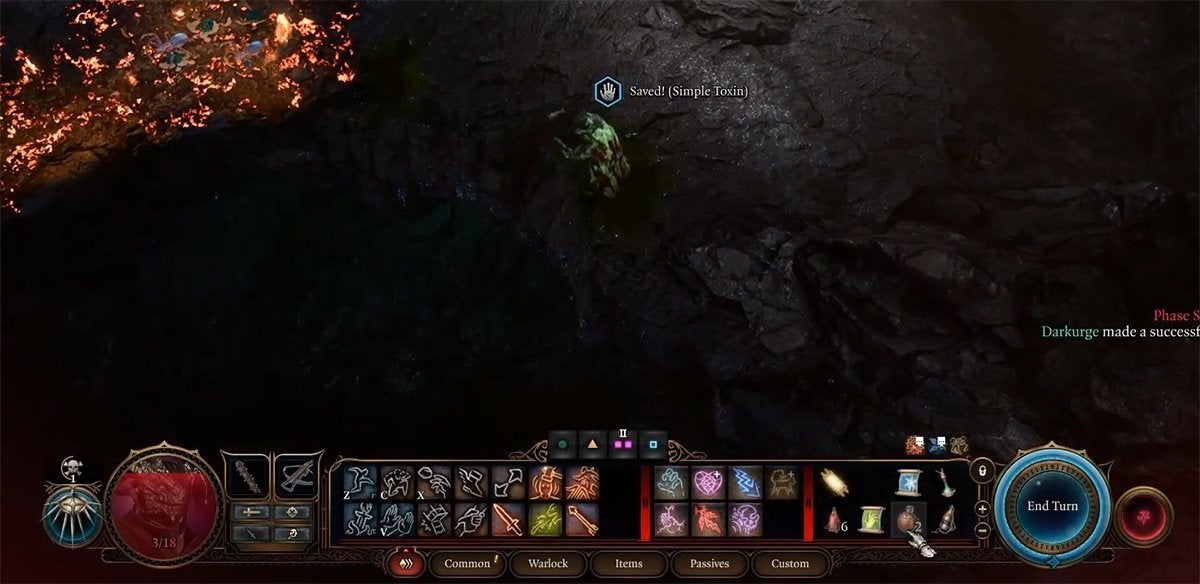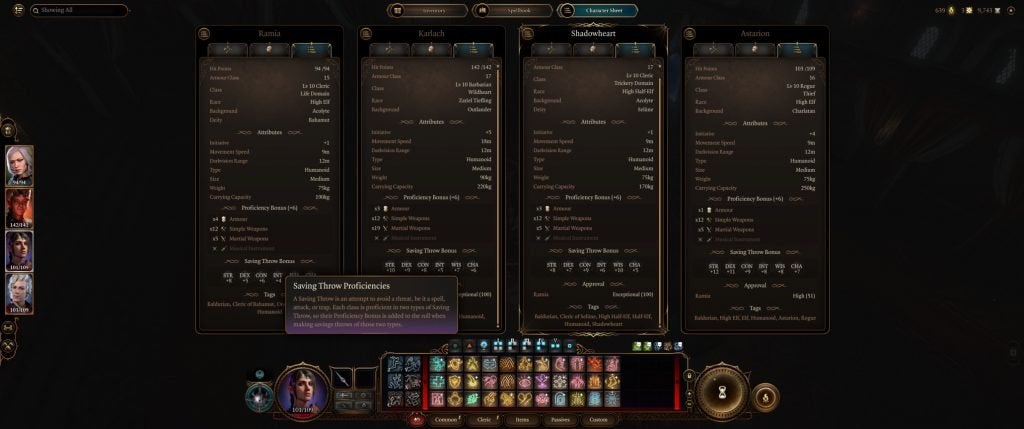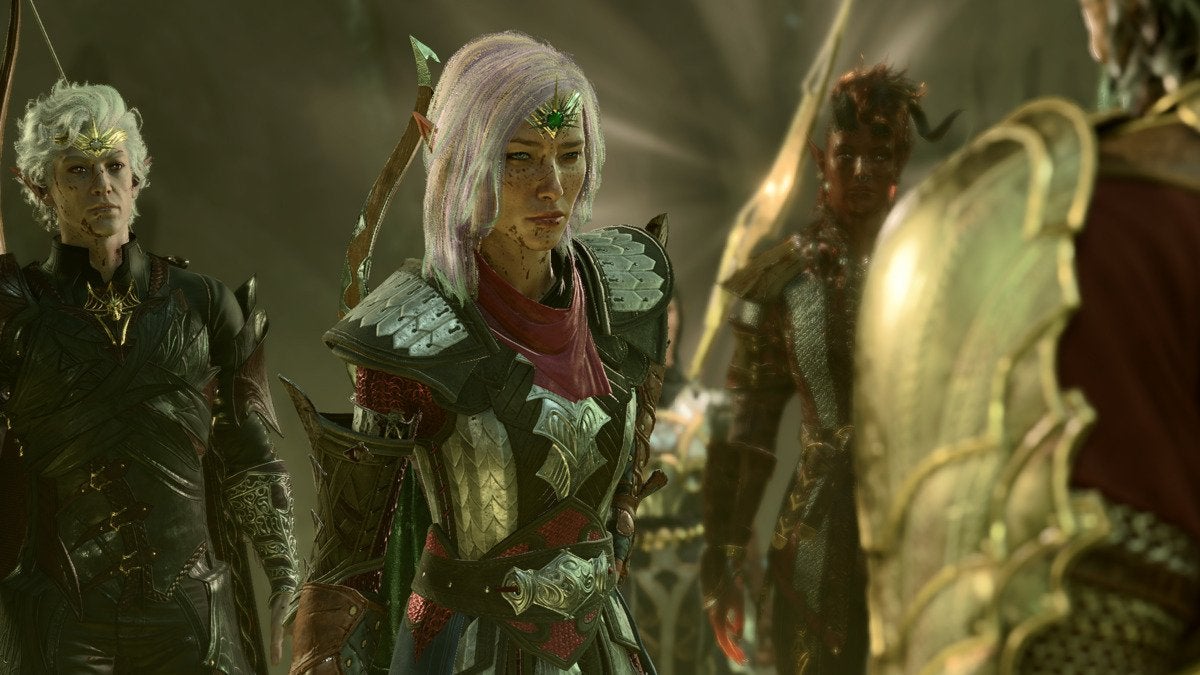![]() Key Takeaway
Key Takeaway
A Saving Throw is a passive roll made to protect your characters from certain effects or actions, such as spells, physical attacks, traps, poisoning, and certain story instances.
Characters are automatically granted proficiency in two Saving Throws depending on their class. They will get a bonus each time these Saving Throws appear in battle, making them more likely to succeed.
While you can actively defend yourself during battle in Baldur’s Gate 3, Saving Throws are passive attempts to guard your characters against threats. The likelihood that these automatic attempts are successful depends on your character’s class, active bonuses, and current Advantages and Disadvantages.
Table Of Contents
What Is a Saving Throw?
A Saving Throw is a passive roll made to protect your characters from certain effects or actions. This can include incoming spell attacks and effects, certain physical attacks, traps, poisoning, and certain special instances. Dungeons & Dragons players typically refer to a Saving Throw as simply a ‘save.’
During your journey, a Saving Throw appears as a small hand icon beside your character. This pop-up will also note whether the save was successful or not.

If a Saving Throw meets or surpasses the Difficulty Class of the incoming attack or effect, it will be successful. Difficulty Class ranges from 1 to 30, with 1 being nearly impossible to fail, and 30 being nearly impossible to succeed.
Types of Saving Throws
There are six types of Saving Throws in Baldur’s Gate 3: Strength, Dexterity, Constitution, Intelligence, Wisdom, and Charisma. We’ve included a brief overview of each type below:
- Strength: Guards against knockback and other kinds of forced movement. Activated most often when triggering traps.
- Dexterity: Dictates the character’s ability to dodge danger. Triggered most often when being targeted by a spell or AoE effect.
- Constitution: Determines the character’s ability to avoid disease and poisons. Also aids when casting spells that require Concentration.
- Intelligence: Determines a party member’s ability to use logic to avoid a bad situation.
- Wisdom: Determines a character’s ability to mentally guard themselves from attacks. Spells that trigger Wisdom Saving Throws are often debuffs.
- Charisma: Determines a character’s ability to use their personality to avoid damaging effects. Charisma Saving Throws are often triggered to protect against Charm spells or certain trap effects.
Saving Throw Proficiencies
A character is automatically granted proficiency in two Saving Throws depending on their class. This grants a proficiency bonus each time the character attempts a Saving Throw requiring expertise in these specific categories. For example, a Druid gains a bonus when attempting Intelligence or Wisdom Saving Throws.
Below, we’ve listed the Saving Throw proficiencies for each class.
| Class | Saving Throw Proficiencies |
|---|---|
| Barbarian | Strength, Constitution |
| Bard | Dexterity, Charisma |
| Cleric | Wisdom, Charisma |
| Druid | Intelligence, Wisdom |
| Fighter | Strength, Constitution |
| Monk | Strength, Dexterity |
| Paladin | Wisdom, Charisma |
| Ranger | Strength, Dexterity |
| Rogue | Dexterity, Intelligence |
| Sorcerer | Constitution, Charisma |
| Warlock | Wisdom, Charisma |
| Wizard | Intelligence, Wisdom |
This information is also listed on the Character Sheet screen, which can be accessed by pressing Tab and selecting Character Sheet at the top of the screen. You can also right-click on a character’s portrait and select ‘Examine’ to find more information.

Even if a character does not have proficiency in a certain type of Saving Throw, they can still attempt it. Despite not having a bonus, it’s still possible that they’ll succeed!
What Else Can Impact Saving Throws?
Saving Throws can be impacted by a character’s current Advantage or Disadvantage. For example, if a character is inflicted with the Bleeding debuff, they will have a Disadvantage if a Constitution Saving Throw appears.
Certain Feats will grant permanent bonuses to Saving Rolls. The Shield Master Feat grants the player a +2 bonus to Dexterity Saving Throws while wielding a shield, while the Dungeon Delver Feat grants Advantage on Saving Throws made to avoid or resist traps.
Additionally, some spells can impact the effectiveness of a Saving Throw. For example, Bane curses up to three creatures with a penalty to Saving Throws and Attack Rolls, while Bless does the opposite, granting a bonus instead.
As you explore the world of Baldur’s Gate 3, selecting the character with the best chance at successful Saving Throws for specific interactions can save you some strife. Make yourself aware of each party member’s proficiencies and make use of their skills accordingly to roll your way to victory.


